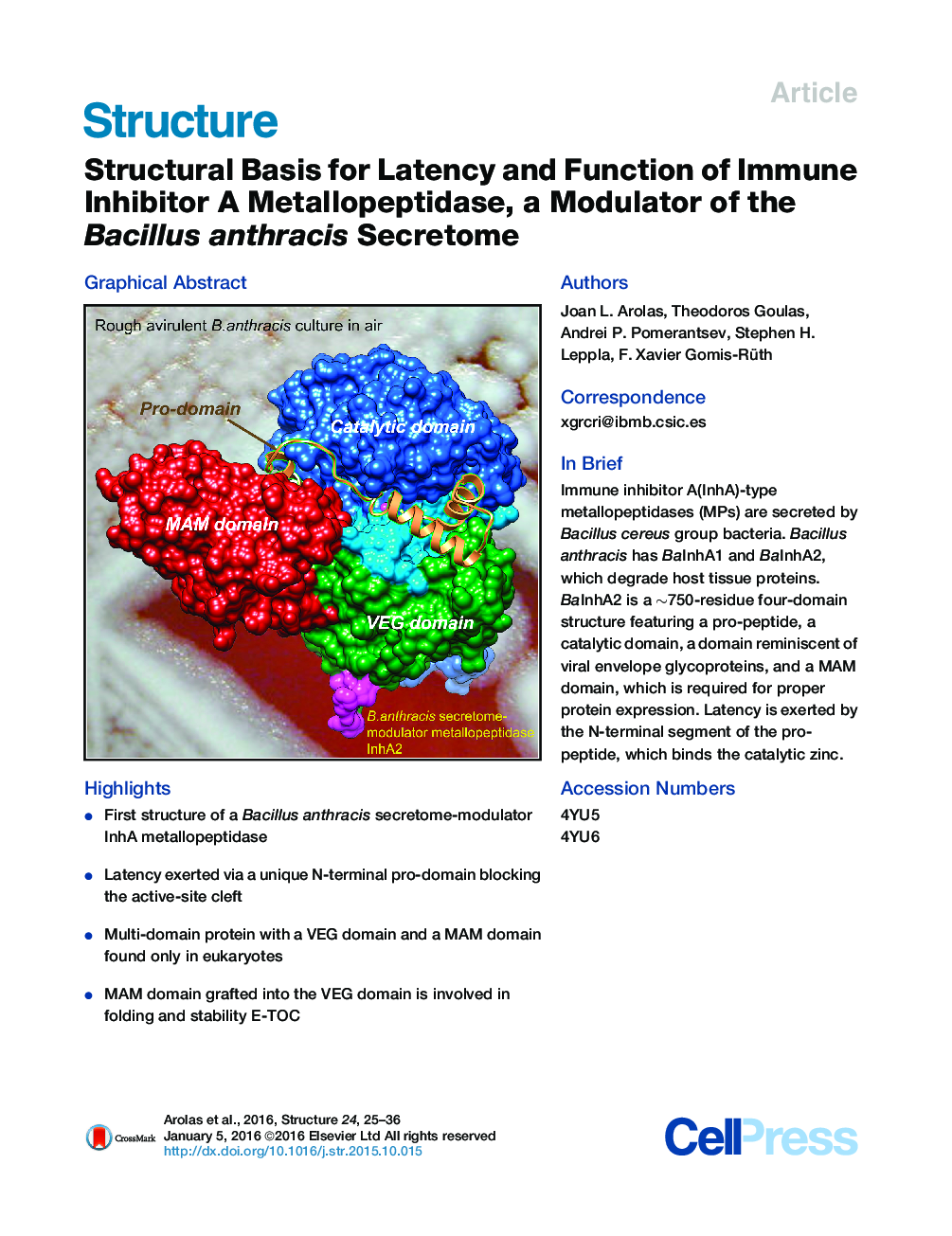| Article ID | Journal | Published Year | Pages | File Type |
|---|---|---|---|---|
| 2029615 | Structure | 2016 | 12 Pages |
•First structure of a Bacillus anthracis secretome-modulator InhA metallopeptidase•Latency exerted via a unique N-terminal pro-domain blocking the active-site cleft•Multi-domain protein with a VEG domain and a MAM domain found only in eukaryotes•MAM domain grafted into the VEG domain is involved in folding and stability E-TOC
SummaryImmune inhibitor A(InhA)-type metallopeptidases are potential virulence factors secreted by members of the Bacillus cereus group. Two paralogs from anthrax-causing Bacillus anthracis (BaInhA1 and BaInhA2) were shown to degrade host tissue proteins with broad substrate specificity. Analysis of their activation mechanism and the crystal structure of a zymogenic BaInhA2 variant revealed a ∼750-residue four-domain structure featuring a pro-peptide, a catalytic domain, a domain reminiscent of viral envelope glycoproteins, and a MAM domain grafted into the latter. This domain, previously found only in eukaryotes, is required for proper protein expression in B. anthracis and evinces certain flexibility. Latency is uniquely modulated by the N-terminal segment of the pro-peptide, which binds the catalytic zinc through its α-amino group and occupies the primed side of the active-site cleft. The present results further our understanding of the modus operandi of an anthrax secretome regulator.
Graphical AbstractFigure optionsDownload full-size imageDownload high-quality image (441 K)Download as PowerPoint slide
